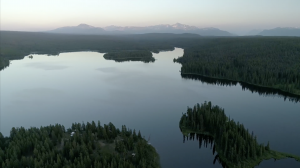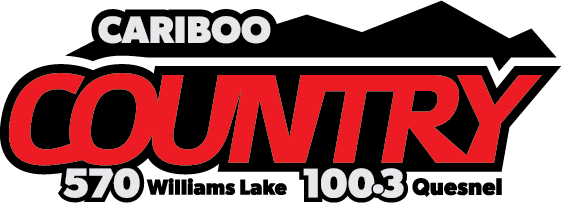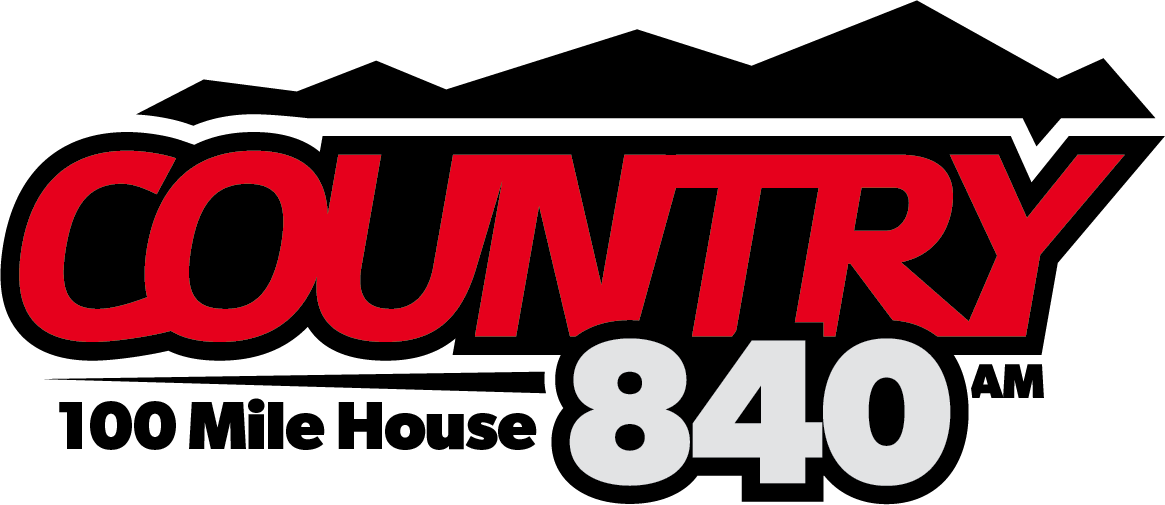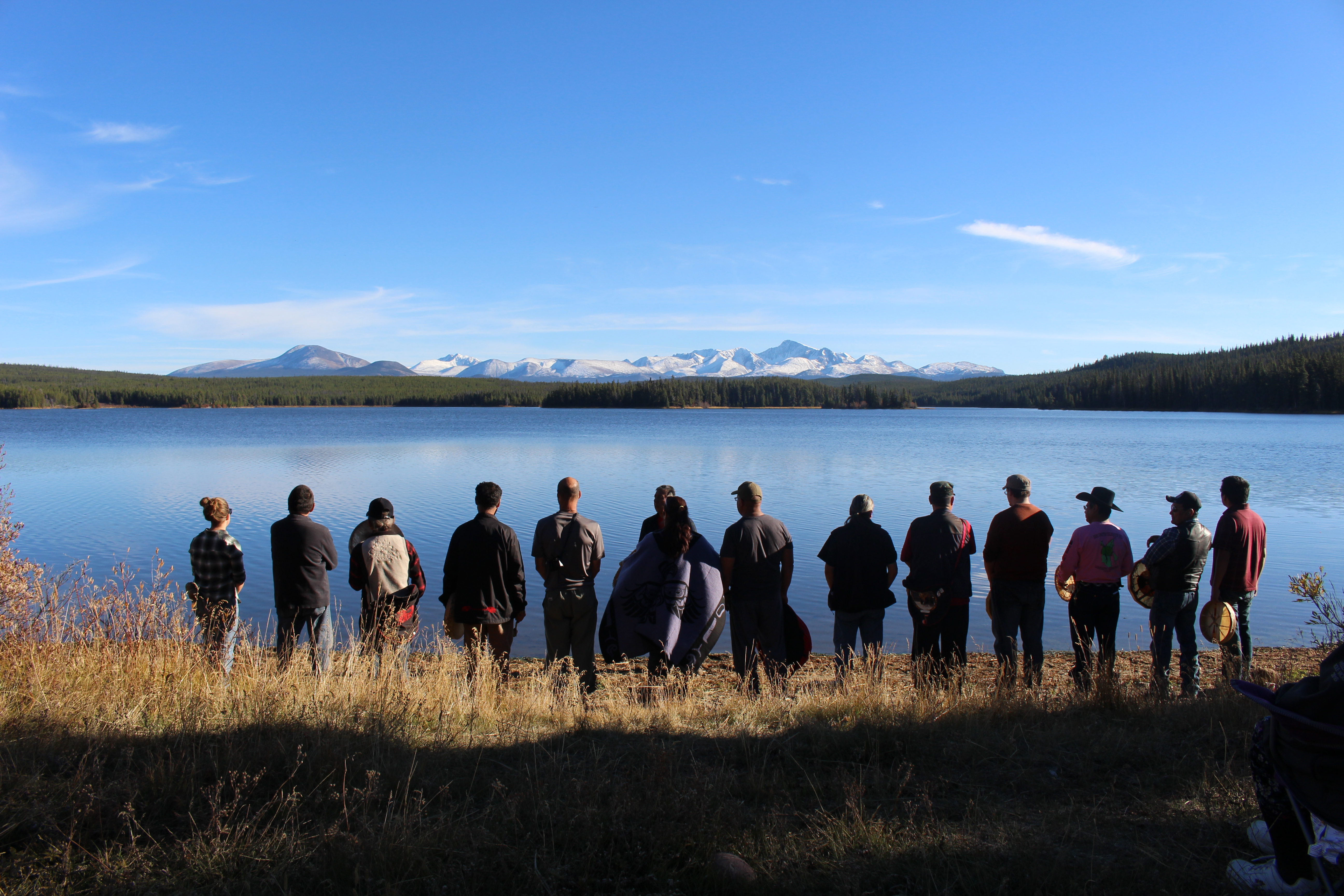The Tsilhqot’in Nation will be in Vancouver to mark World Water Day and their fight to protect their land.
The Tsilhqot’in Nation and other First Nation Chiefs will be holding a water and drum ceremony Friday morning before entering the BC Court of Appeal seeking an injunction to halt drilling for Taseko Mines’ proposed New Prosperity gold-copper mine 125 kilometers southwest of Williams Lake.

“It’s BC Courts we’ve never had success with B.C. We’ve always had success with the federal government through the Supreme Court of Canada so that’s where our success lies in,” said Chief Jimmy Lulula.
“B.C even though we beat them, there are always holes that they give them so they can keep draining our pockets, draining our resources for a project that cannot be built. This is just an exploration permit I think in our opinion to provoke us, to see what we’re going to do even though their project is absolutely denied and won’t go ahead not in our time.”
Taseko Mines was granted approval by B.C’s Ministry of Energy and Mines in July 2017 to conduct extensive road building, drilling, test pits, and seismic line testing, and build a 50-man camp.
The BC Court of Appeal upheld the drilling permit on March 1, 2019.
Dr. David Suzuki, Grand Chief Stewart Phillip, and UBCIC Secretary Vice Treasurer Chief Judy Wilson are expected to join the Tsilqhot’in in Friday morning’s ceremony.
Later in the evening the Tsilhqot’in will co-host a Gathering for Sacred Water.
“No one else can compare to that,” Lulula said of the Teztan Biny (Fish Lake) and surrounding area that has the strongest and most consistent wild sockeye run on the Fraser River system.
“To us, it’s related to World Water. There are not enough rivers like this one that could even come close to it so that’s us raising awareness for not only B.C but for the world to see what our current governments are doing to our land.”
Timeline of Events:
-By Tsilhqot’in National Government
- 1980s-1990s – Junior exploration company finds major ore deposit in Tŝilhqot’in territory
- 1989 – Xeni Gwet’in issue the Nemiah Aboriginal Preserve Declaration affirming jurisdiction over their lands and putting TML on notice that a major mine proposal was not appropriate for this area.
- 1990 – Xeni Gwet’in begin trapline court action in response to proposed clear-cut logging of its caretaker area of Tŝilhqot’in territory.
- 1995 – TML seeks federal and provincial approvals for its “Prosperity” Mine proposal. The federal Department of Fisheries and Oceans (DFO) warns TML and the Province that the destruction to Teẑtan Biny is unacceptable because neither DFO nor the Minister of the Environment could approve the loss of this rare and fish-rich (85,000 rainbow trout) lake.
- 1998 – TML withdraws from environmental permitting applications
- Mid-2000s – TML, under new ownership, new federal and provincial governments, and buoyed metal markets, re-initiates environmental permitting applications
- 2007 – The Xeni Gwet’in trapline case evolves into an Aboriginal title case, leading to the Late Justice Vickers landmark 2007 Tŝilhqot’in v. B.C. ruling.
- 2009 – After months of negotiation for a joint federal-provincial panel review, the BC EAO unilaterally announce that they will not participate, and instead conduct an in-house environmental review. The Tŝilhqot’in leaders learned of this via the press.
- 2010 (January) – The BC EAO rushes its review, issuing an approval for the Prosperity Mine ahead of the federal Panel hearings. The Tŝilhqot’in boycotted the unilateral EAO process and call the approval a “rubber stamp”.
- 2010 (July) –The Prosperity Mine Federal Panel releases its report and finds numerous significant, adverse environmental and cultural effects. The Panel also notes the BC EAO was missing key information as a result of not participating in the hearings.
- 2010 (November) – The federal government rejects the Prosperity Mine Proposal due to the unjustifiable impacts to the environment, and Tŝilhqot’in culture and rights.
- 2011 – a mere 3 months after the federal rejection, TML announces it is reapplying for a revised mine proposal called the New Prosperity mine. The company says it will no longer drain Teztan Biny, but the plan requires an un-proven and unprecedented whole lake re-circulation scheme. The mine design was based on an alternative reviewed in the first Panel Review, when both TML and Environment Canada stated that it would result in greater longterm environmental risk.
- 2011-13 – The Tŝilhqot’in Nation objects to the second federal review, arguing that forcing communities to go through an unprecedented second federal EA, and subjecting community members to explain to an entirely new panel the cultural importance of Teẑtan Biny, was unfair and unjustified. Despite these grave concerns, the Tŝilhqot’in Nation participated in good faith in the second panel review.
- 2012-13 – The majority Federal Conservative government begins dismantling and weakening federal environmental protection laws. The Tŝilhqot’in fear this is designed to support approval of unacceptable projects such as the New Prosperity proposal.
- 2013 (Oct) – The New Prosperity Panel issues a second, equally scathing report finding numerous significant environmental effects, many of them immitigable.
- 2013 (Nov) – TML begins claiming that the Panel used the “wrong model” for the tailings storage facility, and filed in Federal Court for judicial review of the panel process and report. The question of the tailings storage facility was just one of numerous significant environmental and cultural impacts identified by the New Prosperity Panel.
- 2014 (Feb) – The majority Conservative government finds that once again, the enormous impacts of the proposed mine cannot be justified, and soundly rejects the project a second time.
- 2014 (March) – TML begins judicial review proceedings of the federal rejection of New Prosperity.
- 2014 (June) – The Supreme Court of Canada, in the Tŝilhqot’in Nation decision, for the first time ever in Canadian history, recognizes and affirms Aboriginal title on the ground, to approximately 1750 km2. The ruling ends a long history of denial and sets the stage of recognition of Aboriginal title in its full form. Teẑtan Biny lies in an area of proven Aboriginal rights, and nearby the Declared Title Area.
- 2014 (Oct) – Nuu-chah-nulth Master Carver Tim Paul and his family give the Tŝilhqot’in Nation a totem pole in recognition of the efforts made by the Tŝilhqot’in to advance recognition of Indigenous peoples, and the strong relationship between the Nuu-chah-nulth and the Tŝilhqot’in. The pole is raised at Teẑtan Biny to recognize and protect the sacred site.
- 2014 (Oct) – At the totem pole raising ceremony, the Tŝilhqot’in communities of Xeni Gwet’in and Yunesit’in, with the support of the Tŝilhqot’in Nation, announce the creation of the Dasiqox Tribal Park, which includes Teẑtan Biny and the surrounding area.
- 2015 – The Final Report of the Truth and Reconciliation Commission of Canada is released. One of its calls to action include calling on “the corporate sector in Canada to adopt the United Nations Declaration on the Rights of Indigenous Peoples”, including a commitment to “meaningful consultation, building respectful relationships, and obtaining the free, prior, and informed consent of Indigenous peoples before proceeding with economic development projects”. (p. 14 of the TRC’s Calls to Action).
- 2015 – The new federal Liberal government commits to implementing the United Nations Declaration on the Rights of Indigenous Peoples, and the Prime Ministers’ mandate letters to cabinet include the statement that, “No relationship is more important to me and to Canada than the one with Indigenous Peoples.”
- 2016 – The Tŝilhqot’in Nation signs the Nenqay Deni Accord with the Province of British Columbia, a framework agreement to guide further negotiations and that establishes a shared vision, principles and structures to negotiate a comprehensive and lasting reconciliation between the Nation and the Province.
- 2017 – The B.C Liberals approve a major drilling permit to TML for the Teẑtan Biny area on the final day before transition to the new NDP government. The Tŝilhqot’in Nation challenge this permit.
- 2018 (April) – Tŝilhqot’in communities of Yuneŝit’in and Xeni Gwet’in release the draft community vision and management goals for Dasiqox Tribal Park to the public for feedback and host public information sessions. Goals for the Tribal Park area include ecosystem protection, sustainable livelihoods and cultural revitalization.
- 2019 – Drilling permit is upheld by the BC Court of Appeal. The BC Court of Appeal recognizes the profound cultural and spiritual importance of the area for the Tŝilhqot’in people, and even states that it might have been reasonable to deny the drilling program at this time, but ultimately concludes that it was reasonable to approve the program.
- March 2019 – The Tŝilhqot’in Nation is seeking an injunction against this permit on March 22, 2019 while it applies for leave from the Supreme Court of Canada to have the appeal heard.
(Editor’s note: This article has been corrected the location of the proposed New Prosperity gold-copper mine as 125 kilometers southwest of Williams Lake.)




